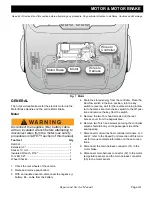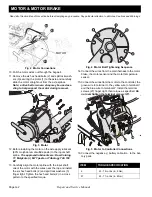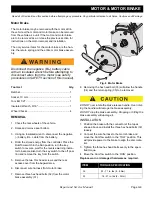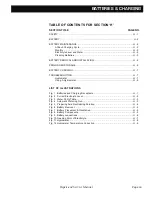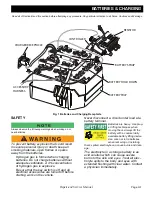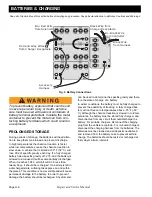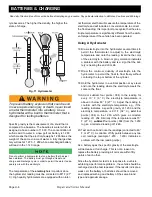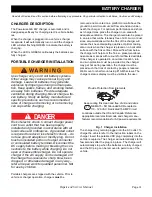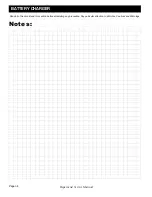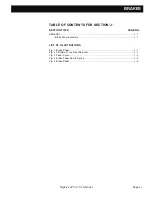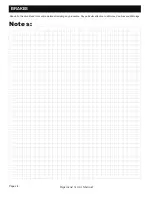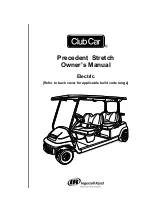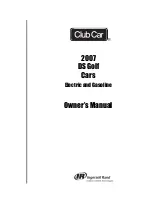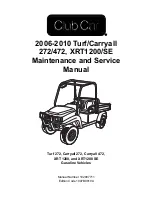
BATTERIES & CHARGING
Page H-7
Repair and Service Manual
Read all of Section B and this section before attempting any procedure. Pay particular attention to all Notes, Cautions and Warnings.
B
B
Fig. 10 Freezing Point of Electrolyte
BATTERY CHARGING
The battery charger is designed to fully charge the bat-
tery set. If the batteries are severely deep cycled, some
automatic battery chargers contain an electronic module
that may not activate and the battery charger will not
function. Automatic chargers will determine the correct
duration of charge to the battery set and will shut off
when the battery set is fully charged. Always refer to the
instructions of the specific charger used.
Before charging, the following should be observed:
Do not overfill batteries. The charging cycle will expel
electrolyte and result in component damage.
•
The electrolyte level in all cells must be at the
recommended level and cover the plates.
•
The charging must take place in an area that is
well ventilated and capable of removing the
hydrogen gas that is generated by the charging
process. A
minimum
of five air exchanges per
hour is recommended.
•
The charging connector components are in good
condition and free from dirt or debris.
•
The charger connector is fully inserted into the
vehicle receptacle.
•
The charger connector/cord set is protected from
damage and is located in an area to prevent
injury that may result from personnel running
over or tripping over the cord set.
•
The charger is automatically turned off during the
connect/disconnect cycle and therefore no elec-
trical arc is generated at the DC plug/receptacle
contacts.
In some portable chargers, there will be a rattle present in the
body of the charger DC plug. This rattle is caused by an inter-
nal magnet contained within the charger plug. The magnet is
part of the interlock system that prevents the vehicle from
being driven when the charger plug is inserted in the vehicle
charging receptacle.
TROUBLESHOOTING
In general, troubleshooting will be done for two distinct
reasons. First, a battery that performs poorly and is out-
side of the manufacturers specification should be identi-
fied in order to replace it under the terms of the
manufacturer’s warranty. Different manufacturers have
different requirements. Consult the battery manufacturer
or the manufacturer’s representative for specific require-
ments.
The second reason is to determine why a particular
vehicle does not perform adequately. Performance prob-
lems may result in a vehicle that runs slowly or in a vehi-
cle that is unable to operate for the time required.
A new battery must
mature
before it will develop its
maximum capacity. Maturing may take up to 100 charge/
discharge cycles. After the maturing phase, the older a
battery gets, the lower the capacity. The only way to
determine the capacity of a battery is to perform a load
test using a discharge machine following manufacturer’s
recommendations.
A cost effective way to identify a poorly performing bat-
tery is to use a hydrometer to identify a battery in a set
with a lower than normal specific gravity. Once the par-
ticular cell or cells that are the problem are identified,
the suspect battery can be removed and replaced. At
this point there is nothing that can be done to salvage
the battery; however, the individual battery should be
replaced with a good battery of the same brand, type
and approximate age.
Hydrometer
A hydrometer is used to test the state of charge of a bat-
tery cell. This is performed by measuring the density of
the electrolyte, which is accomplished by measuring the
specific gravity of the electrolyte. The greater the con-
centration of sulfuric acid, the more dense the electro-



